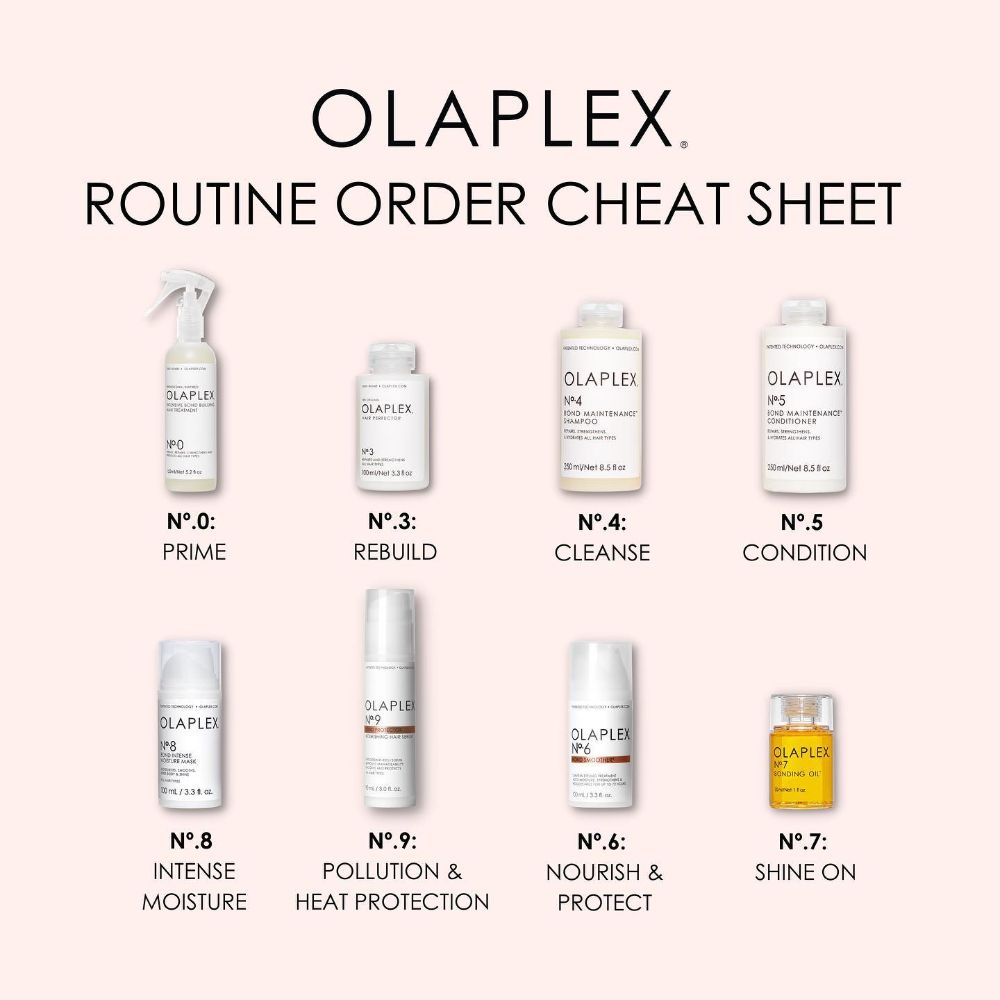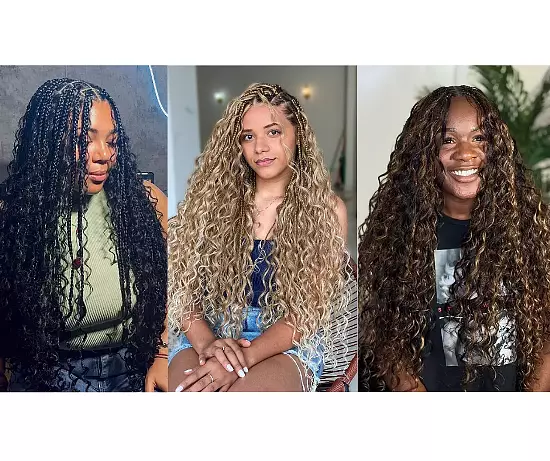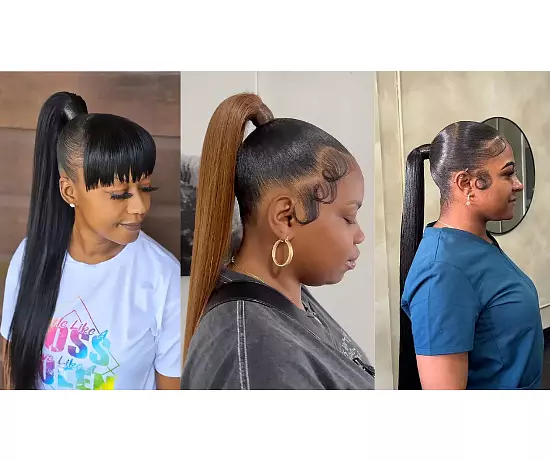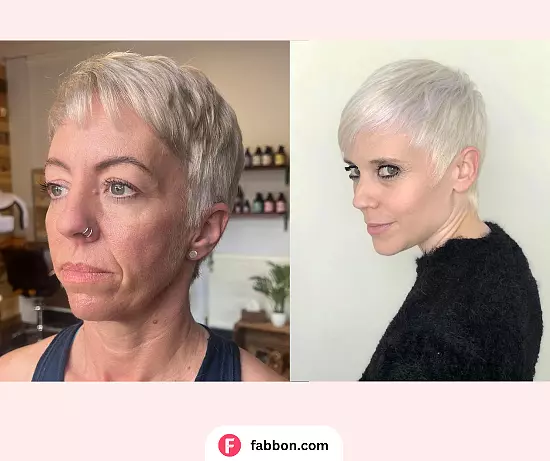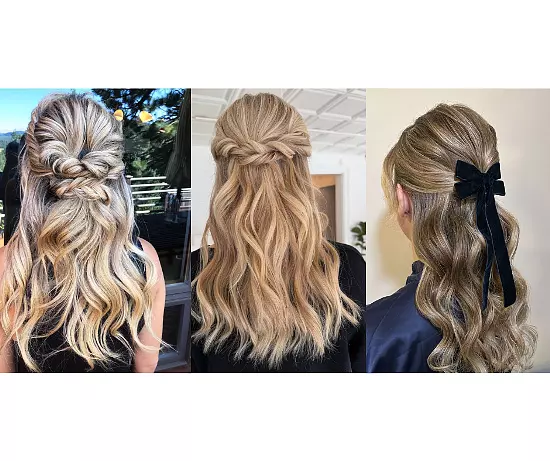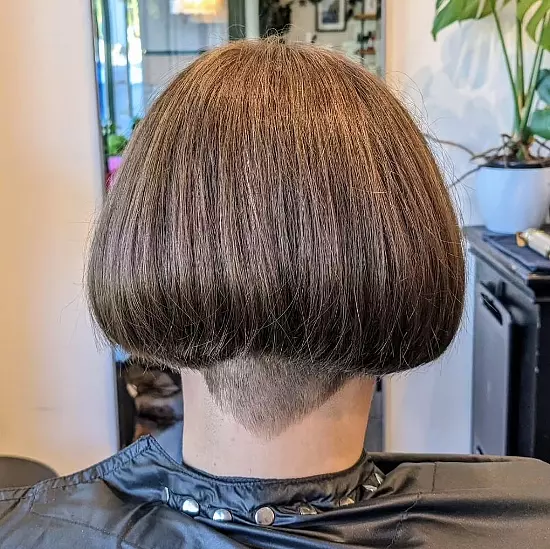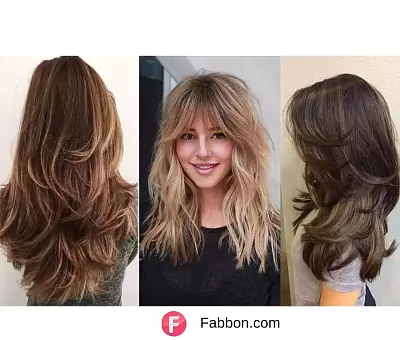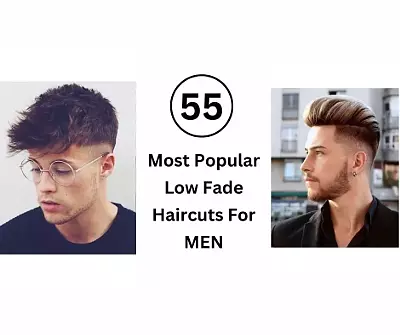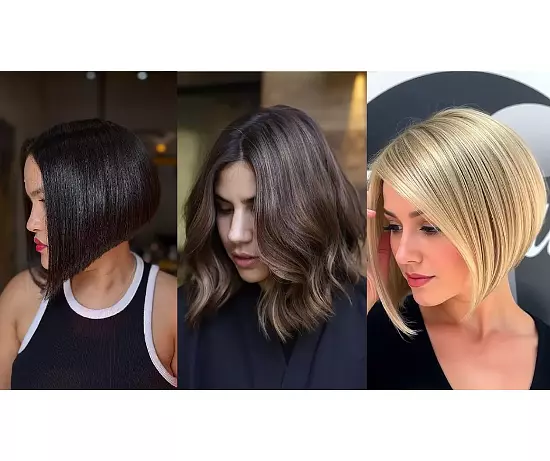Olaplex Vs K18: Which One Is Best For Your Hair?
Sheena Shah
Updated At 18 Mar 24
Are you caught in the Olaplex vs K18 war? If you are also confused about choosing between K18 and Olaplex for your hair repairing and strengthening needs, you've landed in the right spot.
Olaplex, launched in 2014, became a popular bond-building treatment in no time. While Olaplex was enjoying its fame, another product, K18, swiftly changed the hair care scene in 2020. In a couple of years, K18 emerged as a stiff competitor for Olaplex with its innovative 4-minute hair repair solution.
Let's learn more about Olaplex and K18 to know which hair treatment works best for you.
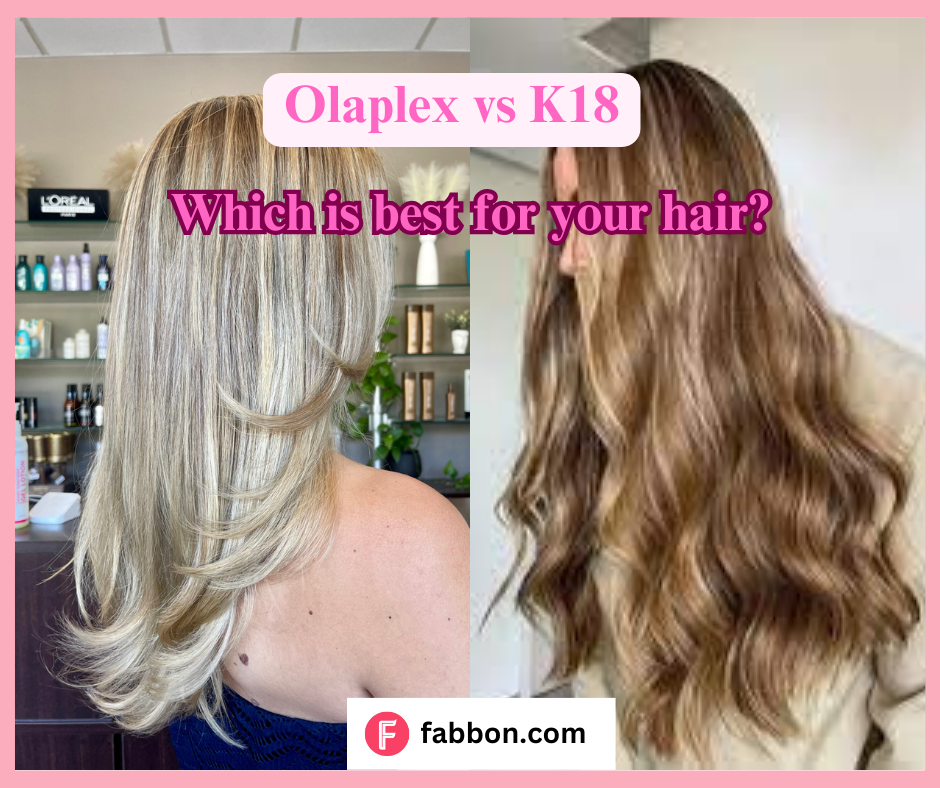
What is Olaplex?
Olaplex has gained popularity for its transformative effects on hair that have been through repeated colour treatments or chemical processes. The key to finding the best Olaplex products lies in understanding their versatility and effectiveness across the entire range.
From the classic Olaplex No. 3 Hair Perfector to the latest innovations like the N°4C Bond Maintenance Clarifying Shampoo, every product in the Olaplex lineup is designed to give your hair the best results. Even celebrities like Drew Barrymore and Kim Kardashian are known to use Olaplex No.3 Hair Perfector, impressed by its benefits, such as minimizing breakage and split ends.
What sets this hair treatment apart is its simplicity and ease of use. Whether you're incorporating Olaplex into your salon routine or using it at home, the products are straightforward and user-friendly. With clear instructions and minimal steps required, anyone can incorporate Olaplex into their hair care routine.
Read More: Aquaphor vs Carmex

BENEFITS OF THE OLAPLEX HAIR TREATMENT
How Does Olaplex Work?
Olaplex works by targeting and repairing the broken disulfide bonds within the hair's structure. These bonds are essential for maintaining the strength and integrity of the hair, but they can become damaged or broken due to various factors such as chemical treatments, heat styling, and environmental stressors.
When hair undergoes processes like coloring, bleaching, or perming, these disulfide bonds can become compromised, leading to weakened and damaged hair. Olaplex's patented technology works to reconnect these broken bonds, effectively repairing and strengthening the hair from within.
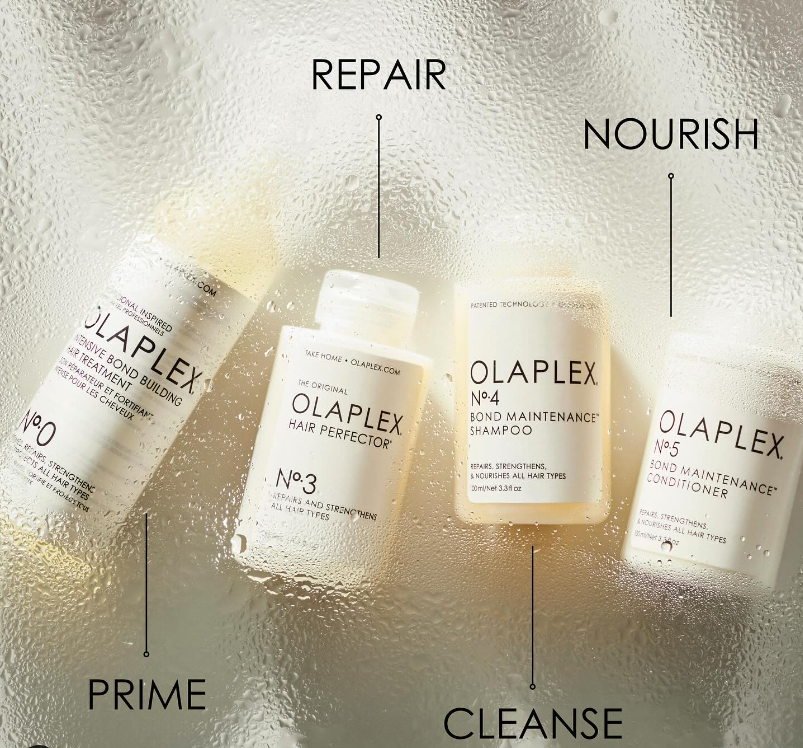
The Olaplex system typically involves several steps, including the application of Olaplex products during salon treatments or at-home treatments. Products like Olaplex No. 1 Bond Multiplier and Olaplex No. 2 Bond Perfector are commonly used along with coloring or bleaching to prevent damage and repair broken bonds during the treatment process.
Olaplex also offers at-home treatments like Olaplex No. 3 Hair Perfector, which is applied to damp hair before shampooing to further repair and strengthen the hair between salon visits. Overall, Olaplex works by repairing and rebuilding the damaged disulfide bonds within the hair, resulting in stronger and healthier locks.
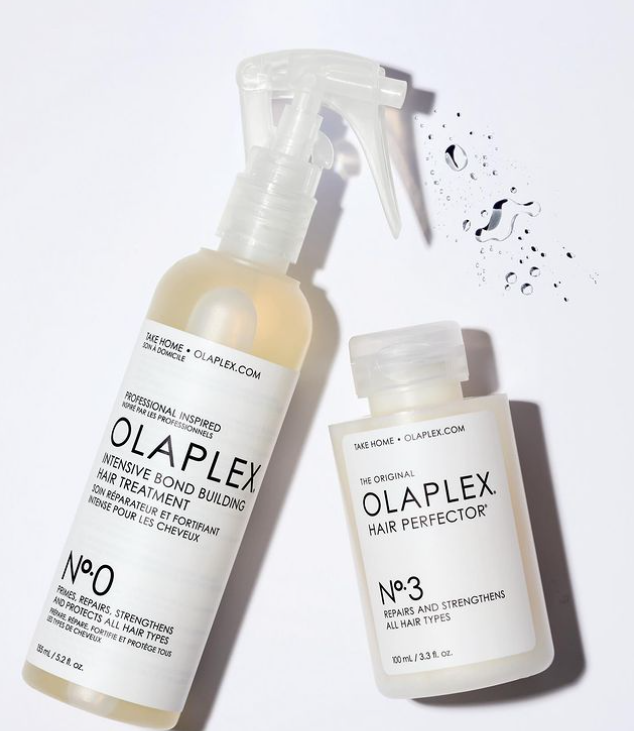
How to Use Olaplex?
Two highly talked-about Olaplex products are the No. 0 Intensive Bond Building Treatment and the No. 3 Hair Perfector. These products are designed to work together as a powerful duo to strengthen and repair hair, and they're used before shampooing.
Firstly, let's talk about Olaplex No. 0 Intensive Bond Building Treatment. This is a spray-on primer that serves as the initial step in the process. It's formulated to be applied to dry hair until the hair is lightly saturated from root to tip. After application, you wait for 10 minutes.
PRO TIP: Use a comb to ensure thorough saturation of the hair.
Next up is Olaplex No. 3 Hair Perfector. Once the 10 minutes with No. 0 are up, you apply the No. 3 Hair Perfector all over your hair. You should apply it generously, ensuring that all strands are covered from roots to ends. Now, you let both products work together for another 10 minutes.
PRO TIP: Divide your hair into sections and apply No. 3 generously, leaving it on for the maximum recommended duration – 10 minutes!
After a total of 20 minutes has passed (10 minutes with each product), it's time to rinse and shampoo your hair as usual. As for how often you should use Olaplex No. 3, it's recommended to use it 2 or 3 times a week for damaged hair.
Using them more frequently than that isn't necessary and may not yield better results. Consistency is key here, so incorporating these treatments into your weekly hair care routine will help maintain the health and strength of your hair over time.

Olaplex Before and After Pics
Before using Olaplex, hair may show signs of damage such as dryness, brittleness, split ends, and lackluster appearance. This damage could be a result of chemical treatments like coloring, bleaching, or perming, as well as heat styling or environmental factors.
After adding Olaplex into the hair care routine, significant improvements can be observed. Hair appears visibly healthier, with increased shine, smoothness, and softness. Olaplex helps to repair and strengthen the hair from within, resulting in reduced breakage, improved elasticity, and enhanced overall texture.

Additionally, color-treated hair may show more vibrancy and longevity, as Olaplex helps to maintain the integrity of the hair during and after the coloring process. Before and after Olaplex photos often showcase transformative results, with hair looking revitalized and rejuvenated.
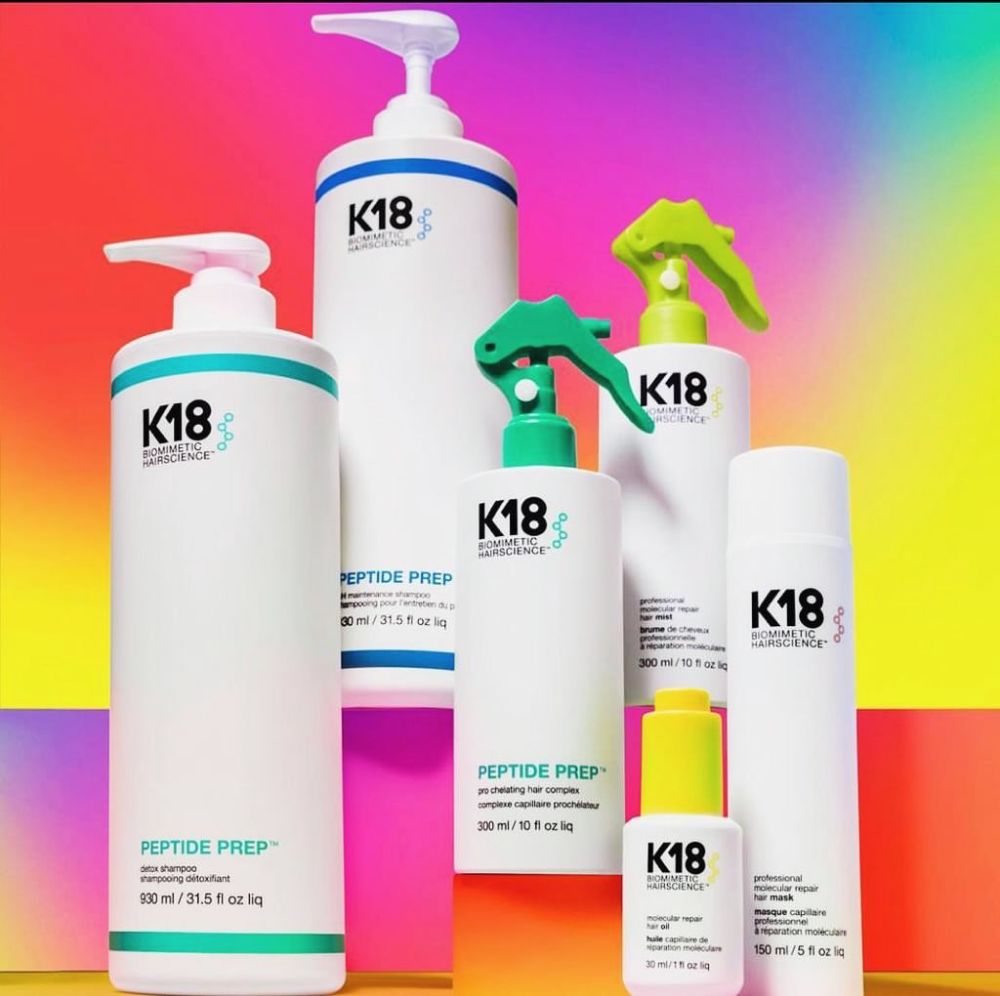
What is K18?
Olaplex vs K18 confusion started after K18 showed amazing results in treating hair damage, with some even claiming it is better than Olaplex. K18 is more than just a regular hair treatment as it works at a molecular level to actually fix the hair damage instead of just covering it. This means it targets the root cause of the problem, repairing broken bonds deep within your hair shaft.
You would be surprised to know that famous celebrities such as Selena Gomez, Hailey Bieber, Rihanna, and Halsey use this hair treatment for smooth and healthy hair. K18 even received positive reviews from Khloe Kardashian, who expressed her enthusiasm for the cult product on X (formerly Twitter), stating,
"My hair was severely damaged + my stylist suggested this leave-in repair mask – it truly revived my hair."
Whether your hair is suffering from the effects of frequent coloring, heat styling, or environmental stressors, K18 can help. And the best part? K18 works quickly. In just 4 minutes, it can make a noticeable difference in the look and feel of your hair.
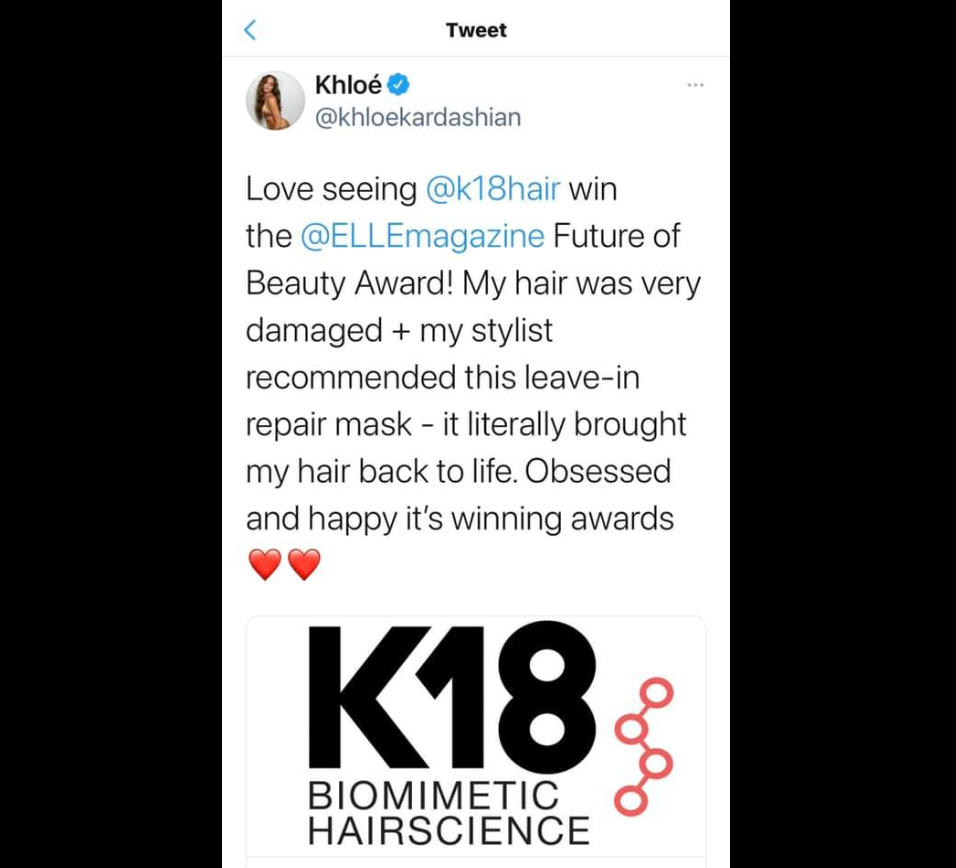
How Does K18 Work?
At the core of K18 Hair Treatment is the K18 Bioactive peptide, a bioactive peptide designed to renew and restore damaged hair. Here's how it works:
The K18 Bioactive peptide deeply penetrates the hair shaft, targeting damaged keratin proteins. It then binds to these damaged proteins and reconnects broken polypeptide chains at a molecular level.
Once attached to the damaged proteins, K18 Bioactive undergoes a structural transformation, strengthening and repairing the fractured bonds. It mimics the natural keratin structure of the hair, enhancing moisture retention and promoting thicker, healthier-looking hair.
The reestablishment of disulfide bonds reinforces the hair's strength along its length and width. This gradual restoration process enhances elasticity, resilience, and overall hair health, ensuring lasting and noticeable improvements.
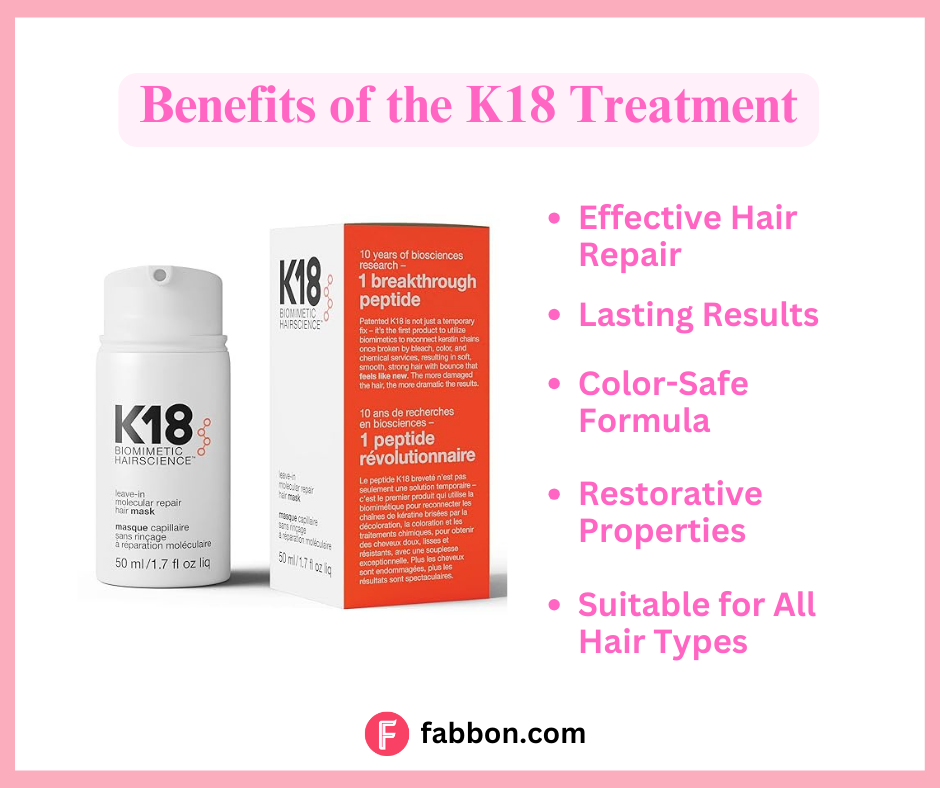
How to Use K18?
Here's how to use the K18 Leave-In Molecular Repair Hair Mask (50ml):
1. Shampoo your hair, but do not condition it. Towel-dry your hair thoroughly.
2. Apply 1-3 pumps of K18 leave-in molecular repair hair mask, depending on your hair length and thickness. Start from the ends and work your way up to the roots.
3. Let it sit for 4 minutes without rinsing.
4. Comb your hair and style it as usual, adding additional styling products if needed.
5. Use K18 for 4-6 washes after your salon service, then as needed.
Pro Tip: If you frequently use a lot of hair products, it's important to clarify your hair before using K18. This helps to remove any buildup of minerals and metals from your hair.
Word of Caution
- To prevent product buildup caused by its potent bioactive peptide technology, do not overuse K18 products.
- Before applying K18 products to your hair, conduct a patch test to ensure you don't have any allergic reactions.

K18 Before and After Pics
Before using K18, hair may appear dull, brittle, and damaged, with visible signs of breakage and split ends. It might lack shine and feel rough to the touch. After incorporating K18 into the hair care routine, hair appears visibly healthier, with increased shine, smoothness, and softness, visible in the K18 before and after pics.
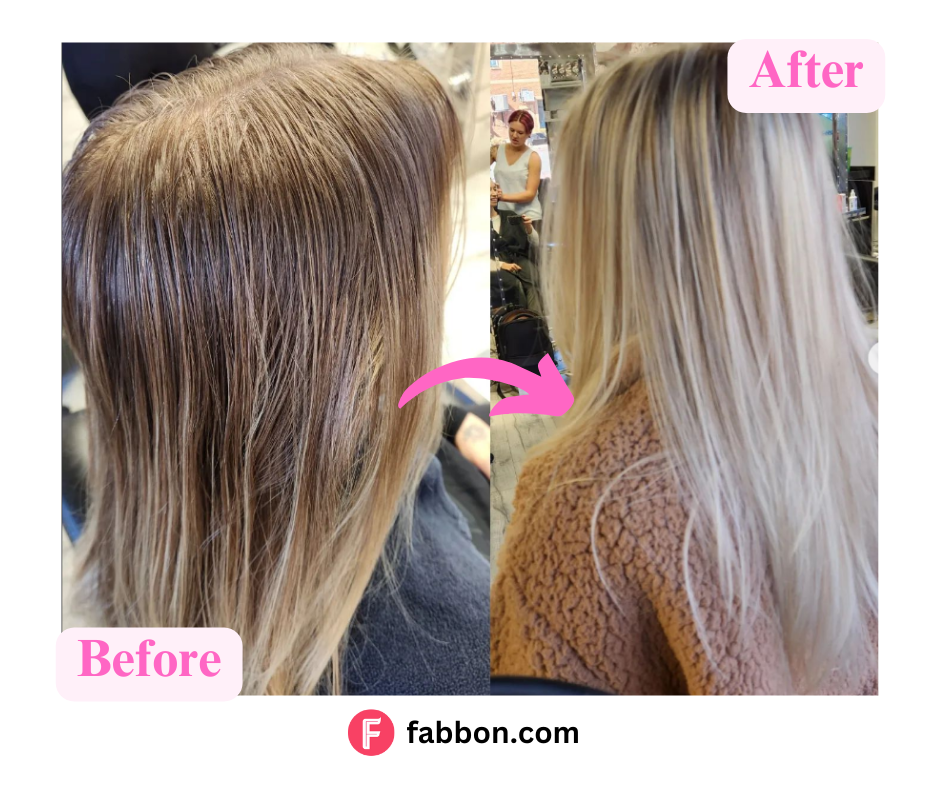
Additionally, color-treated hair may show more vibrancy and longevity, as K18 helps to maintain the integrity of the hair during and after the coloring process. Before and after images often show how K18 effectively restores the health and beauty of damaged hair.
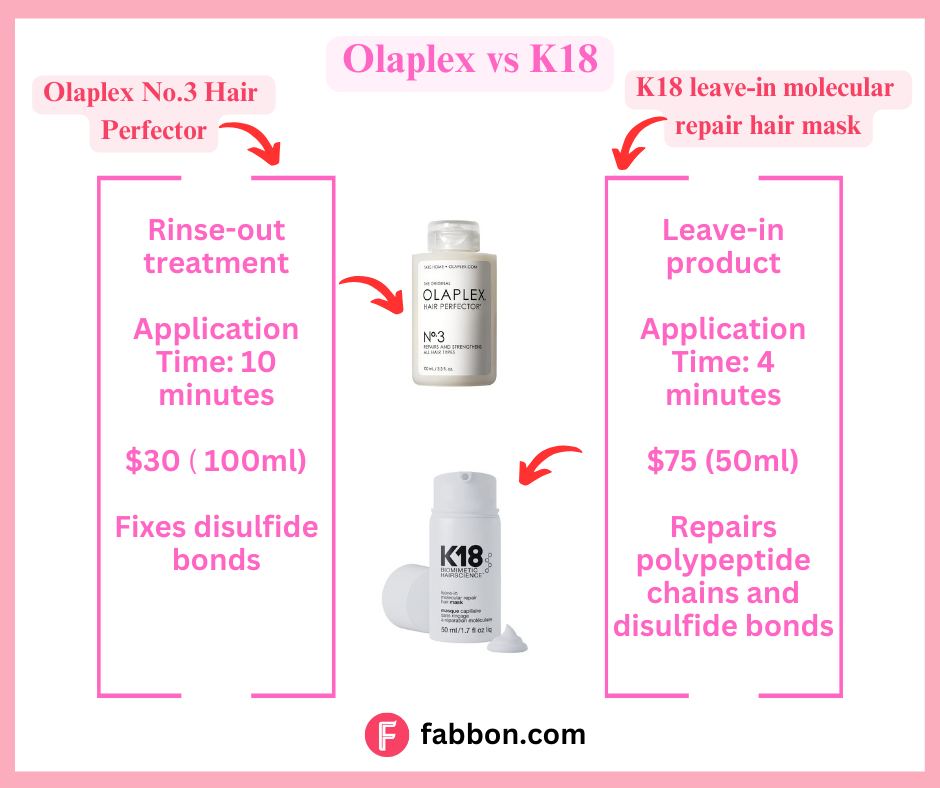
What is the difference between K18 and Olaplex?
Both K18 Hair and Olaplex claim to fix damaged hair and strengthen its bonds. They both use the same special ingredient, bis amino diglycol dimaleate, to mend broken hair bonds. However, there are some differences between them. Let's take a look.
Olaplex Nº.3 Hair Perfector vs K18 Leave-in Molecular Repair Hair Mask
One major difference between the popular products is how you use them: Olaplex No.3 Hair Perfector is a treatment you rinse out, while K18 Leave-in Molecular Repair Hair Mask is a leave-in product. K18 is also quicker and simpler to use. You only need 4 minutes for K18, while Olaplex takes 10 minutes. Plus, you don't even need to rinse out K18 – its active ingredients keep working even after you've applied it.
Another big difference is in how they repair hair: Although they both work inside the hair to repair damage, Olaplex fixes the disulfide bonds, whereas K18 goes deeper and repairs the polypeptide chains as well as disulfide bonds.
The cost of the hair products of the two brands also differ. Olaplex is much cheaper, available at $30 (Nº.3 HAIR PERFECTOR™; 100ml). On the other hand, the K18 cost is $75 (full-size leave-in molecular repair hair mask; 50ml).
Olaplex boasts a diverse range of products to suit different hair care needs. From priming and prepping with No.0 Intensive Bond Building Treatment to daily maintenance with No.4 Bond Maintenance Shampoo and No.5 Bond Maintenance Conditioner, Olaplex offers solutions for every step of the hair care routine. Speciality products like No.6 Bond Smoother and No.7 Bonding Oil target specific concerns like frizz and heat damage.
In contrast, K18, a newer player in the market, offers a more concise lineup, including its leave-in molecular repair hair mask and a selection of shampoos and conditioners designed to reverse hair damage and promote hair health.
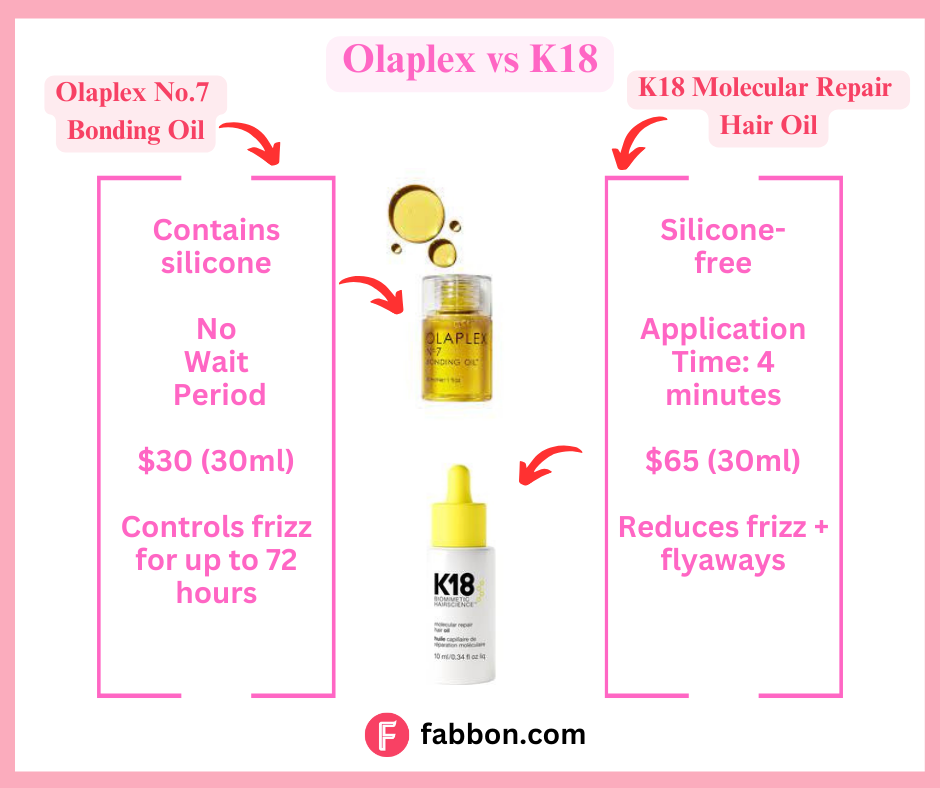
Olaplex No.7 Bonding Oil vs K18 Molecular Repair Hair Oil
Olaplex No.7 bonding oil and K18 Molecular Repair hair oil serve to add shine, protect from heat styling, and reduce breakage. Olaplex offers a vegan, cruelty-free formula suitable for all hair types, with ingredients like silicone and plant oils. However, it contains silicone and artificial fragrance that can cause skin irritation and allergy.
In contrast, K18 is silicone-free, with avocado and sunflower oils for hydration, catering to all hair types. Yet, it contains benzyl alcohol and artificial fragrance. Olaplex retails at $30 for 30ml, while K18 costs $65 per 30ml bottle. Both oils protect against heat and can be used on wet or dry hair.
Overall, both Olaplex No.7 Bonding Oil and K18 Molecular Repair Hair Oil target damaged hair, offer heat protection and improve shine and manageability. However, Olaplex No.7 focuses on a "less is more" approach to application, while K18 suggests a 4 minute process for application on both damp and dry hair. Additionally, K18 offers extended frizz control for up to 24 hours.
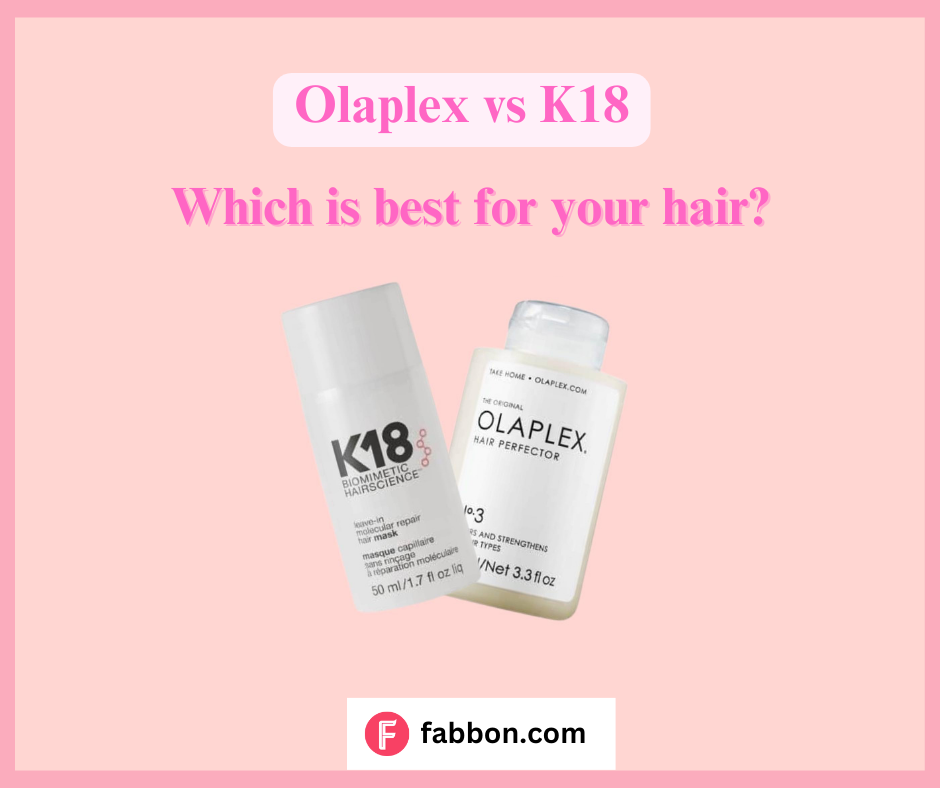
Olaplex Vs K18: Which Treatment Is Best for Your Hair?
Both the K18 Molecular Repair Mask and Olaplex No. 3 Hair Repair Perfector aim to provide similar results: sleek, shiny, and healthy hair. Some users claim that Olaplex gives more noticeable and longer-lasting results plus it comes at a lower price point of $30 for 100 ml compared to K18's $75 for 50 ml. However, others prefer the K18 mask for its quicker application process, fulfilling its promise of results in just four minutes.
Board-certified dermatologist Dr Jenny Liu, clearing some of the confusion between Olaplex vs K18, explained,
"I view Olaplex as a great treatment if you're looking for something fast as well as hair not severely damaged and K18 is something that you would use for a little bit longer to see results but does help in a more permanent way to repair so thereby I feel like it's better for the individuals that have more severely damaged hair."
If you regularly undergo bleaching or chemical straightening, Olaplex may serve as a preventive measure. On the other hand, if you're focused on fixing your hair's internal structure, especially after such treatments, K18 may be more effective.
You can also use both products in your hair care routine, although it could turn into a costly affair. Since K18 and Olaplex repair hair in different ways, combining them could give additional benefits. For example, applying Olaplex No. 3 Hair Protector before shampooing and using K18 Hair Treatment afterwards is also a good option.
Ultimately, the choice between K18 and Olaplex can depend on your lifestyle and hair's specific needs. If you're frequently on the go, K18 might suit you better with its convenient application. On the other hand, if you have more time to indulge in a hair care routine, Olaplex could be your preference.


